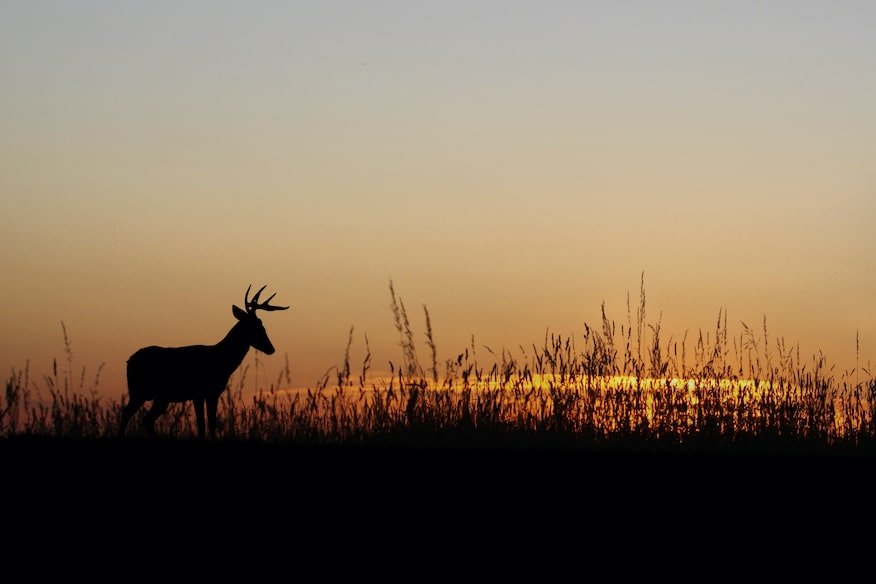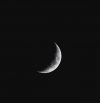Does deer hunting and moon phases have anything to do with each other? How does the moon affect deer movement at all!?! The short answer is 100%, absolutely NOT REALLY – the moon doesn’t affect deer movement in a huge way!
To be honest, I had a hard time digesting this information, as I wrote this article. Many hunters and researchers have attempted to correlate deer movement in relation to moon phases. There has been a lot of speculations and debate on how and how much the moon impacts deer activities.
One camp has suggested that the moon’s phase affects the activeness of the deer to hunt for their food. Since it needs light to feed during the night, it is observed that deer’s movement is enhanced following the low lit moon phases. Another camp says that it was actually the moons positioning that influence the movements,. The third camp thinks that the moon has no significant influence over the deer movements at all, because minimal evidence is available to support any of these lunar hypotheses. So which one is it?
Does The Moon Affect Deer Movement?
The overwhelming data around moon phases and deer movement says that there is no consistent indicators of moon phases or moon light affecting deer movement. Scarcely any exploratory testing has been led with respect to how lunar phases enhance or decrease animal movement and behavior.

In 2017, a new research published from Penn State College of Agricultural Sciences refutes the long standing belief that the moon phases change deer movement. The Penn State research team arrived at the conclusion suggesting that the moon and its phases have little to no impact on deer mobility by night or day. The study was based more on data and used better technology than the previous moon-phase studies, having stumbled upon these interesting findings.
- The doe moved nearly 200+ feet per hour at night and less than 160+ feet per hour during the day
- They moved the most, up to 400+ feet, when the sun was setting or rising and were more active near dusk than dawn.
- Compared against periods of full moon, the study showed that the deer travelled less than 20 feet more per hour during nights with a new moon.
- In daylight during periods of partial moon phase doe moves about 13 feet farther.
Interestingly, another study found there was a rise in mid-day activity by deer on days with a full moon. Although moon phases can slightly affect deer activities, more important environmental factors determine their movement.
What are the factors that affect deer movements?
There are other elements that will surprise you, that impact when deer move, not related to the moon. Here are some key factors!:
1. Daily Routine
Deer are neither diurnal or nocturnal animals for they are a league on their own. They are considered crepuscular animal for they are primarily more active during dusk and dawn. They do this to avoid other animal predators during the peak hours of the day or night. After waking up, their biggest priority would be food. This is when they would start to venture their way towards available food sources.Their best priority is to find food after waking up. This is when they would venture their way towards available food sources.
As the night deepens, the deer start to become more active. They either a start to go around and graze the woods or go back to their bedding sites. But since they’re not really nocturnal animals, they don’t have the best night vision. A couple of hours later, they would head out again to eat. Eating their last meal for the day would often result to them feeling very sluggish and lethargic.
Afterwards, they would go back to their bedding sites a few hours before or after sunrise (6 am to 10 am). Deer usually wake up in the middle of the day (11 am to 1 pm) to go for a snack. Afterwards, they would go back to sleep during 1:30 pm to 3:30 pm to prepare for the big night ahead. However, keep in mind that although this guideline is already pretty accurate, there are still certain elements that might completely throw all these off kilter.
2. Season
Seasons also plays a vital role in determining a deer’s behavior. Their activity during early spring would depend on how well they survived the previous winter. Their daily routine would start earlier and their bedding would be much later. They will also prioritize resources and would stick around at areas with the most abundant food sources.
In summer, they tend to be in a slump because of the hot weather. So that means deer are more active when the sun isn’t up and the weather’s fairly good. Though, the summer heat makes the fawn agitated during bedtime, this triggers them to wander around during late afternoon or early evening.
The fall season is a bit more complex to the other seasons. At this season, they like to eat like crazy, so they would be willing to go the extra mile to find food. The rut or the breeding season is in the fall, so this makes the bucks more erratic and restless.
Eventually the winter will come and the rut will end. The cold weather will get deer up on their feet, and moving a lot. Deer love grazing in open fields during this time, as long as they are being pressured badly.
3. Temperature
Temperature plays a significant factor to the activeness of the deer. In hot temperatures, deer tend to sleep more so cool temperature is the ideal for deer to move around.
4. Weather
A sudden change in the temperature will definitely make a buck move. So what else is the perfect way of changing their position but a sudden change of weather. Animals have keen senses on which they can expect an upcoming weather event. A rainfall is a definite way to get a deer moving.
5. Availability of Resources
Resources are needed to ensure survival. If the place is ideal: Quality food, water sources and optimal bedding settings would of course attract deer and would more likely around the area.
6. Hunting Pressure
Areas that have been dawned by the hunting season would less likely to experience much activity on the current season. Also the animals in this area would be more likely as guarded on edge, so only a few deer sighting will be found in the area.
The Wrap Up
A decent hunter is as good as the amount of time you put in the stand, the ground you chase and the ability to make the shot. Don’t plan to hunt based on moon phases, simply plan to hunt. There are lots of tried and true hunting tactics for deer, but moon phase predictions are not one of them. It’s extremely important for you to take each of this factor in thought: from the deer’s daily activity, routine, eating habits, the biological condition, season and weather.
These factors change the movement and behavior of deer, so you should figure out how to analyze and utilize this to your advantage. Overall, the moon shouldn’t be a major factor in your decision to get in a stand or not. Lower light moons for me have been more productive in the past, but based on all these scientific tests, I am of the opinion that moon phases do not change deer movement in a way that is worth noting.
While you are here, you may want to check out:
- 5 Best Places To Hang A Tree Stand
- Meet Greg, the Author of Proper Hunting
- Best skinning knives of the year!
Get out there and check it out for yourself. Hope to see you in the woods.
